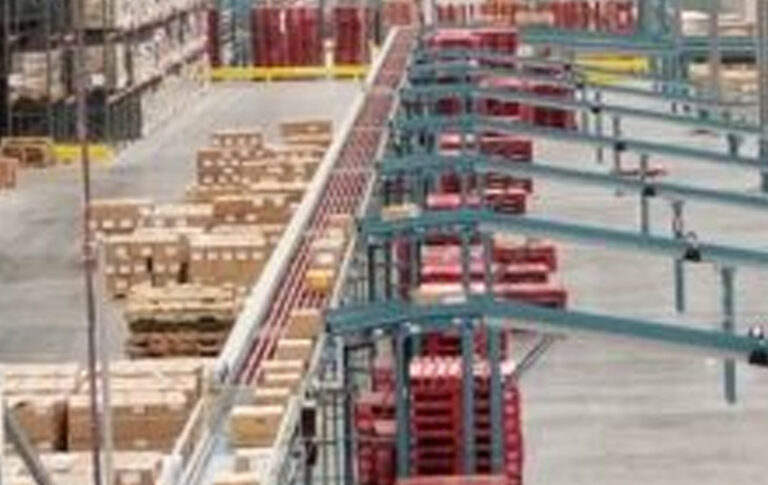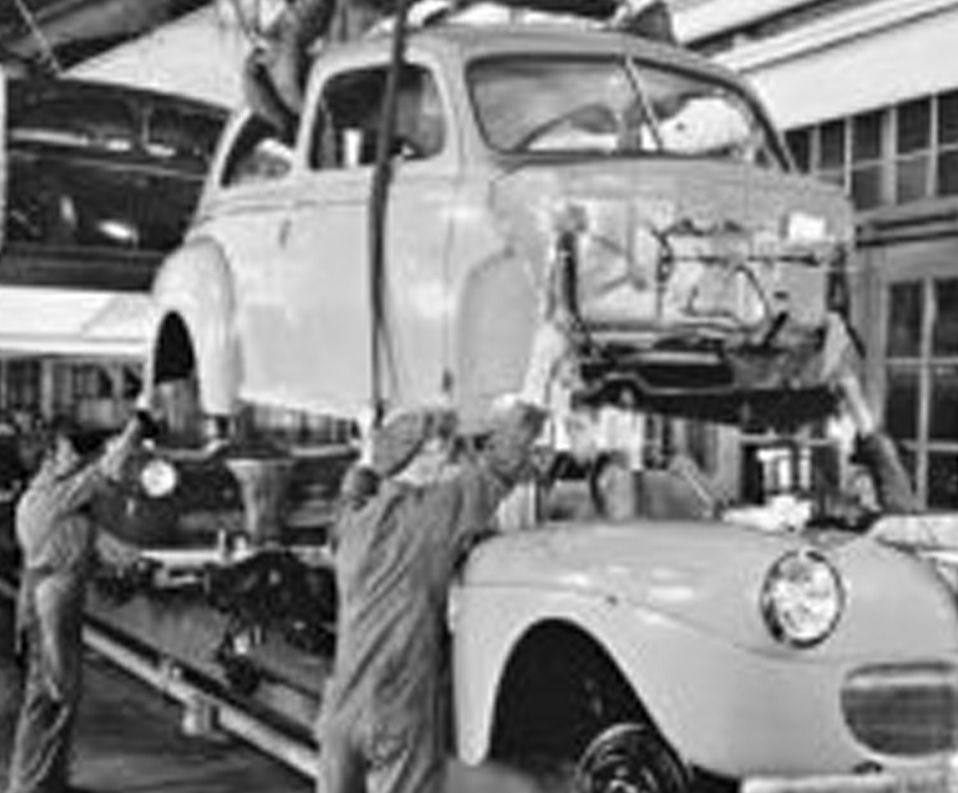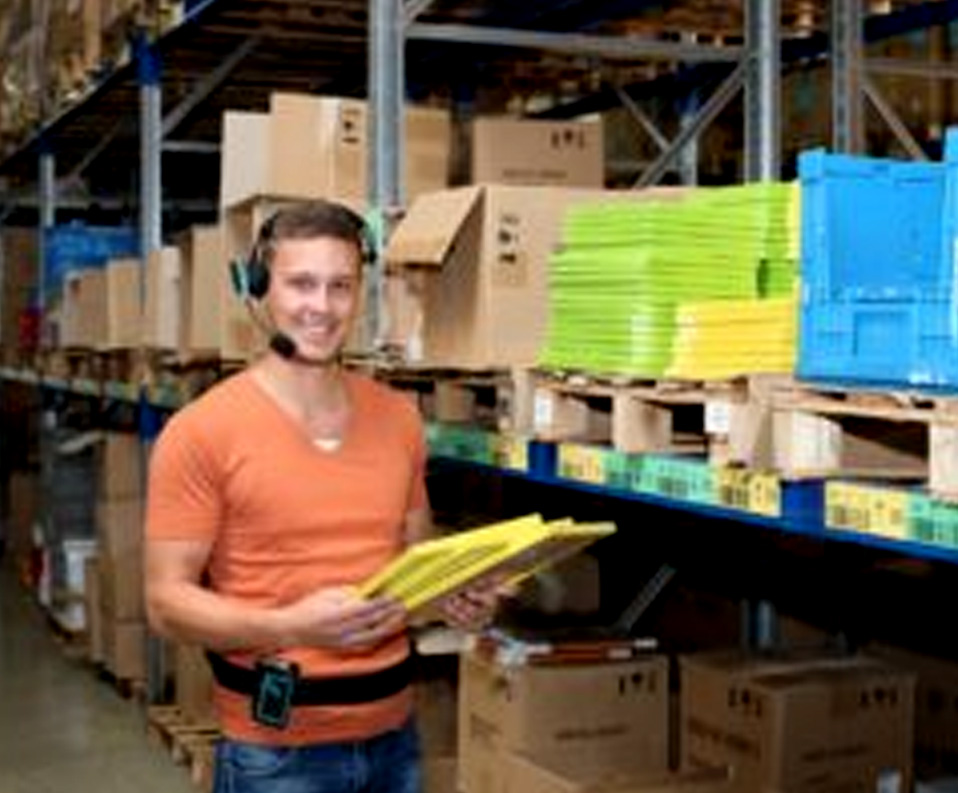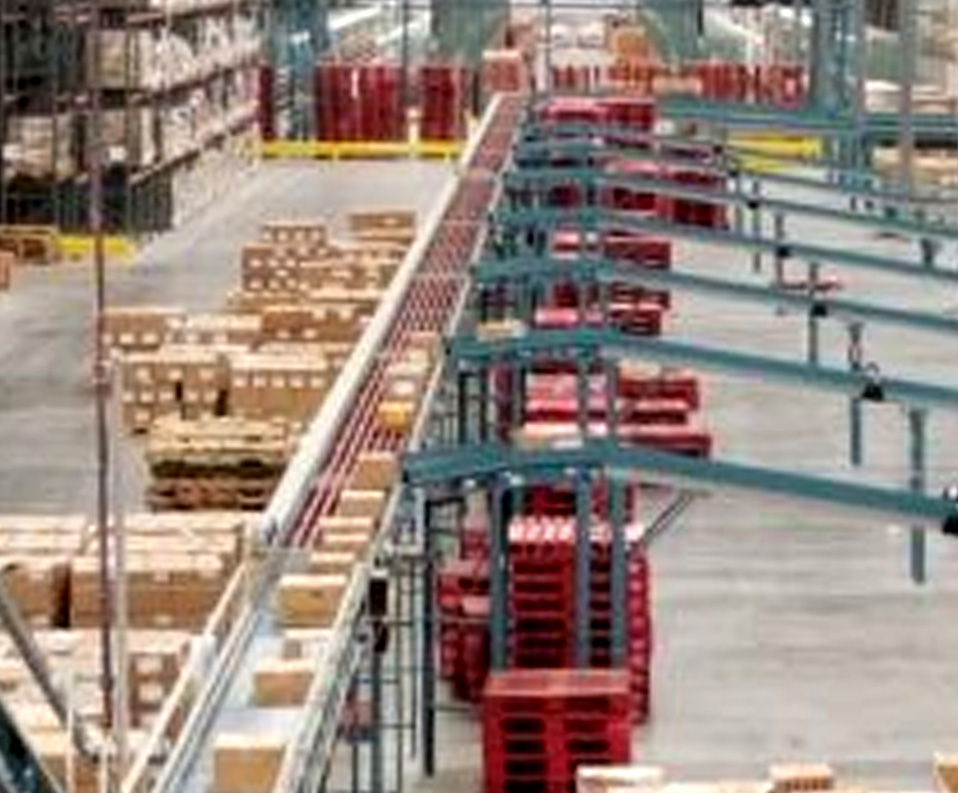
Imagine the benefits of all order fulfillment processes operating in a continuous order flow operation, with shipping and receiving software uniting processes, and working in real-time! Let’s face it, many distribution operations are still a series of disconnected processes with receiving, put-away, replenishment and pick, pack and ship operating as discrete operations. If Replenishment for example is operated as a batch process or on the second shift, it is nearly impossible to consistently deliver same day order shipments if a short inventory condition occurs in several forward storage locations throughout the day.
United processes is the critical requirement in order for distribution centers to achieve same day Internet and B2B order fulfillment while eliminating bottlenecks, reducing non-value labor, increasing order accuracy and reducing the delivery window.

It’s not a new idea, continuous flow is the same principle that drove the first generation of manufacturing efficiency. Over 100 years ago, Henry Ford revolutionized manufacturing with the introduction of the assembly line. Manufacturing has not remained stagnant, it has taken the assembly line, leaned it up, automated it, statically measured and created very agile and efficient practices that are all based on the same continuous flow process.
The goal is the same in distribution, achieve a balanced order flow across the order fulfillment operation, from order release through the delivery of the order to the shipping dock by synchronizing the processes. Distribution operations gain increased efficiency with improved order flow and the right software order release management logic to balance the flow of orders throughout the order fulfillment operation.
The first step in achieving continuous order flow is a design study focused on the ways to increase order flow based on the order profiles, shipment sizes, and the inter-dependencies of the current order pick, pack, and ship processes. The design study provides business managers with the vision and justifications for making operational changes. It outlines current operations and the recommended process improvements that considers the technologies best suited to transform discrete pick, pack, and ship operations to a continuous order flow process.
Order and SKU movement data analysis is also analyzed as part of the study. Data is reviewed to understand and recommend improvements to product storage and ensures items are stored in the right locations, correct storage technology is employed and optimum travel paths are achieved so that orders flow more efficiently across the operation.
Storage technology such as pallet flow, carton flow and shelf storage, matched to the DC’s A, B, and C SKU movement and slotted along the shortest pick path, is one of the most overlooked practices that can optimize the order flow in a DC. A design improvement initiative should identify process improvements, select the right technologies matched to the order profile, and eliminate touches and bottlenecks. The outcome of the design study documents the distribution processes’ inter-dependencies and evaluates the collective changes that will contribute to the highest productivity gains and ROI.
The design study identifies process improvements and roots out any non- valued labor from the operation. Automation technologies are then reviewed and identified to increase the order flow across the pick, pack, and ship operation. RF, voice picking and pick to light are some of the automation technologies that can be considered along with the process improvements for increasing order picking rates.
An RF or pick by voice based picking system could be the initial automation boost, or these technologies can be a component used in combination with other automation technologies such as Vertical Storage Modules, VLM’s or Mini-load Shuttle Systems, Pick to Light, Put Walls for order consolidation, intelligent conveyor systems with in-line pack automation such as weight-vision audit, dimensioning and print and apply labeling. Same-day delivery operations need to rely less on operators by automating out the labor. Leaner pick and pack processes combined with the right blend of automation increases picking rates and boost order flow in the order fulfillment operation.
Even a small to mid-size DC operation that ships 1,500 to 5,000 parcel shipments can see great productivity gains by eliminating discrete order fulfillment operations. A lean, low-touch pick by voice batch cart process provides a single touch pick and pack to the shipping carton operation. Batch cart picking using pick by voice efficiently manages the pick and pack of 10-20 or more orders in an optimized travel path. One advantage of voice is the high accuracy validation of the item picked and placed in the shipping carton. Voice technology eliminates the majority of order handling at QC or manual operator packing stations. With voice, the pick completed cartons are then un-loaded on a conveyor for transport to the streamlined, low-labor in-line weight audit, void fill pack and ship area.
Pick by Voice directs the workers using a wireless headset in combination with a hands-free barcode scanner. Voice has clear performance and accuracy advantages over picking with paper or RF terminals. The operator is eyes focused on the work task and does not read instructions or key in numbers so there is virtually no chance to invert a number and make mistakes in picking the wrong item or quantity required.

The latest voice technology integrates the voice commands and scanning validation tasks of the location, item/SKU or lot/serial ID to verify the picking instructions and item placement to the order carton at almost a 100% accuracy rate. Voice combined with Cartonization logic further streamlines order picking by directing the pick and pack directly to the right size shipping carton. It is ideally suited to batch pick 10 or more orders at the same time using a batch pick cart or a Fork truck.
Pick by Voice makes good workers great. The latest generation speaker independent voice engine requires zero voice training, so new workers are productive in 5 to 10 minutes. Voice is consistently faster and order accurate for both existing and new employees. Voice picking can eliminate the majority of non-value labor in a pick to carton process, eliminating the majority of re-packing items from totes to the shipment carton(s) and order checking in the pack process. It also includes real-time labor tracking for worker productivity reporting. Tracking worker productivity allows for motivating better performance with incentives or initiating a Pay for Performance Program. There are distinctive advantages to rewarding and retaining better workers in a tight labor market!

Voice used to direct batch cart picking as the initial project improvement phase or in combination with a pick to conveyor processes eliminates the vast majority of secondary QC due to its superior accuracy over other picking technologies.
However, Increasing picking productivity while ignoring the pack and ship process is counterproductive to the goal of increased order flow in a shorter delivery window! It does no good to pick faster if it will create a bottleneck in the last 100’ of the distribution center. Balance the increased picking productivity by deploying proven automated pack and ship in-line conveyor technologies. Only a few operators are needed at an auto pack station to add void fill and seal 10 or more cartons per minute. Need to increase the DC order throughput capacity? Add more parallel pack automation lines to handle higher hourly order rates during peak daily or seasonal periods.
Pack automation is a critical component covered in any design study to outline the best means available for increasing order flow through packing. Modular 24 VDC conveyor is ideally suited for use in packing automation applications. It is quiet, safe, conveyor for transporting cartons in a zero touch manner. It allows cartons to index to the pack station pacing the operator performance of the void fill, print, and insertion of the packing sheet document to the cartons. A semi-automatic or automatic taper taper/sealer is an easily justifiable investment to further lean up packing. Print and apply labeling should be considered to eliminate the non-value labor of parcel weighing, printing, and hand applying labels to cartons.
After taping, cartons transport on the conveyor to an in-motion scan-weigh-dimension and the print and apply label applicator auto applies the shipping label. A single in-line print and apply label applicator auto- manifests 900 to 1,000 cartons per hour, twice the throughput capacity of 3-4 operators working at manual shipping manifesting stations. Following the auto labeling and manifesting area, a shipping sorter with 2-12 or more diverts sort cartons and cases to the parcel carrier or LTL shipment lanes. A shipping sorter increases order flow and prevents missing carrier cut-off delivery time windows.
Robotics will be coming to a distribution center near you! Every month Modern Material Handling or DC Velocity have articles on the latest use and advancement of Automated guided vehicles (self- driving fork trucks, AGVs) and Autonomous Mobile Robots, (AMRs). The adoption of these technologies has been slow due to past limitations and high costs. However, the latest generation of robot and AGVs are deploying higher resolution and lower cost laser and positional guidance systems, accelerating the performance, eliminating past limitations to accelerate the ROI. AGV’s and AMRs capabilities and usage will continue to increase as the ROI in warehouse operations become further documented.
An emerging use of AMRs is collaboration with batch picking applications. A Smart Batch Pick Cart system that includes batch releases logic to optimize the group of 10-20 orders based on travel path optimization in combination with selecting orders that contain a mix of the same SKU’s, minimize the pick visits to a storage location and increase the operators picking productivity due to less visits to a storage location. Combining intelligent order release with software that dispatches and directs AMRs to perform the cart pick up, move and delivery to picking operators replace the mundane, low value work of pushing carts throughout the required pick zones and the pack area.
AMR’s deliver the batch order pick carts to picking zones coordinated with the operators equipped with voice terminals to direct and coordinate both operator picking duties and the operators and AMRs movement. Pick by Voice is ideally suited to managing the inter-related tasks of order release, AMR movements and operator picking and pack validation within a single unified automated system.
AMR’s also provide the benefit of processing larger batches of orders on the pick cart. Processing larger order batch sizes reduce trips, increase picking density within zones and eliminate operator walk time. The increased SKU picking density is estimated to boost picking productivity 20-25% compared to a voice directed manual batch cart requiring the operator to push the cart to each location. AMR’s also eliminate operator fatigue, especially in a parts and component distribution centers that have a mix of heavier SKU’s. AMR’s will eliminate non-value work, contribute to a safer work place for happier workers and higher employee retention!
The above factors along with the facility size, SKU velocity, and order volume need to be evaluated when considering AMR’s or other technologies for material movement and order picking systems. During the design study, the AMRs, AGVs and other emerging picking robots such as the Grey-Orange Kiva –like pick technologies require picking and replenishment performance analysis for comparison to proven technologies such as Pick Modules, ASRS and Carousel systems to selecting the automation technologies best suited to the operation requirements.
Order fulfillment operations regardless of size or complexity benefit from improved order flow across the pick, pack, and ship operation managed by the right software and technologies synchronized with the WMS or ERP for coordinating the order management, inventory and replenishment duties. A design study is a prudent investment to identify the required process improvements and blend of automation technologies best suited to eliminating discrete operations and non- value labor from a current or new distribution center. Having the right road map at the conclusion of the design will result in a project implementation plan and delivers a compelling ROI.
The Numina Group’s Real-time Distribution Software, RDS™ is a modular and scalable Warehouse Execution and Control System, WES-WCS that includes intelligent continuous or batch order release automation, an advanced Pick by Voice Suite, and pack and ship automation technologies operating seamlessly with a single system architecture. It is a proven real-time execution and automation software platform that can scale from mid-size to highly complex warehouse order fulfillment.
The RDS™ Voice Suite includes a family of picking processes including batch picking, pick to conveyor, mixed case pick to pallet, sort, inspection and order consolidation to manage both parcel and LTL order processing. RDS™ includes a Web based order productivity tracking and labor management tools to manage the order flow across the entire order fulfillment operation. RDS and its family of automation technologies is proven to increase productivity 30% to 50% or more in existing or new distribution centers. If you’re interested in learning more about Real-time Distribution Shipping and Receiving Software WES-WCS Suite of Automation Technologies for continuous order flow, contact the Numina Group to schedule a free on-site assessment.

The Numina Group
10331 Werch Drive
Woodridge, IL 60517
630-343-2600
How the Right Warehouse Automation Decisions Can Solve Your Labor Woes As the economy roars
| Cookie | Duration | Description |
|---|---|---|
| __cf_bm | 1 hour | This cookie, set by Cloudflare, is used to support Cloudflare Bot Management. |
| __hssc | 1 hour | HubSpot sets this cookie to keep track of sessions and to determine if HubSpot should increment the session number and timestamps in the __hstc cookie. |
| __hssrc | session | This cookie is set by Hubspot whenever it changes the session cookie. The __hssrc cookie set to 1 indicates that the user has restarted the browser, and if the cookie does not exist, it is assumed to be a new session. |
| _GRECAPTCHA | 6 months | Google Recaptcha service sets this cookie to identify bots to protect the website against malicious spam attacks. |
| cookielawinfo-checkbox-advertisement | 1 year | Set by the GDPR Cookie Consent plugin, this cookie records the user consent for the cookies in the "Advertisement" category. |
| cookielawinfo-checkbox-analytics | 11 months | This cookie is set by GDPR Cookie Consent plugin. The cookie is used to store the user consent for the cookies in the category "Analytics". |
| cookielawinfo-checkbox-functional | 11 months | The cookie is set by GDPR cookie consent to record the user consent for the cookies in the category "Functional". |
| cookielawinfo-checkbox-necessary | 11 months | This cookie is set by GDPR Cookie Consent plugin. The cookies is used to store the user consent for the cookies in the category "Necessary". |
| cookielawinfo-checkbox-others | 11 months | This cookie is set by GDPR Cookie Consent plugin. The cookie is used to store the user consent for the cookies in the category "Other. |
| cookielawinfo-checkbox-performance | 11 months | This cookie is set by GDPR Cookie Consent plugin. The cookie is used to store the user consent for the cookies in the category "Performance". |
| CookieLawInfoConsent | 1 year | CookieYes sets this cookie to record the default button state of the corresponding category and the status of CCPA. It works only in coordination with the primary cookie. |
| elementor | never | The website's WordPress theme uses this cookie. It allows the website owner to implement or change the website's content in real-time. |
| viewed_cookie_policy | 11 months | The cookie is set by the GDPR Cookie Consent plugin and is used to store whether or not user has consented to the use of cookies. It does not store any personal data. |
| Cookie | Duration | Description |
|---|---|---|
| li_gc | 6 months | Linkedin set this cookie for storing visitor's consent regarding using cookies for non-essential purposes. |
| lidc | 1 day | LinkedIn sets the lidc cookie to facilitate data center selection. |
| messagesUtk | 6 months | HubSpot sets this cookie to recognize visitors who chat via the chatflows tool. |
| UserMatchHistory | 1 month | LinkedIn sets this cookie for LinkedIn Ads ID syncing. |
| Cookie | Duration | Description |
|---|---|---|
| SRM_B | 1 year 24 days | Used by Microsoft Advertising as a unique ID for visitors. |
| Cookie | Duration | Description |
|---|---|---|
| __hstc | 6 months | Hubspot set this main cookie for tracking visitors. It contains the domain, initial timestamp (first visit), last timestamp (last visit), current timestamp (this visit), and session number (increments for each subsequent session). |
| _clck | 1 year | Microsoft Clarity sets this cookie to retain the browser's Clarity User ID and settings exclusive to that website. This guarantees that actions taken during subsequent visits to the same website will be linked to the same user ID. |
| _clsk | 1 day | Microsoft Clarity sets this cookie to store and consolidate a user's pageviews into a single session recording. |
| _ga | 1 year 1 month 4 days | Google Analytics sets this cookie to calculate visitor, session and campaign data and track site usage for the site's analytics report. The cookie stores information anonymously and assigns a randomly generated number to recognise unique visitors. |
| _ga_* | 1 year 1 month 4 days | Google Analytics sets this cookie to store and count page views. |
| _gat_gtag_UA_* | 1 minute | Google Analytics sets this cookie to store a unique user ID. |
| _gcl_au | 3 months | Google Tag Manager sets the cookie to experiment advertisement efficiency of websites using their services. |
| _gid | 1 day | Google Analytics sets this cookie to store information on how visitors use a website while also creating an analytics report of the website's performance. Some of the collected data includes the number of visitors, their source, and the pages they visit anonymously. |
| AnalyticsSyncHistory | 1 month | Linkedin set this cookie to store information about the time a sync took place with the lms_analytics cookie. |
| CLID | 1 year | Microsoft Clarity set this cookie to store information about how visitors interact with the website. The cookie helps to provide an analysis report. The data collection includes the number of visitors, where they visit the website, and the pages visited. |
| CONSENT | 2 years | YouTube sets this cookie via embedded YouTube videos and registers anonymous statistical data. |
| hubspotutk | 6 months | HubSpot sets this cookie to keep track of the visitors to the website. This cookie is passed to HubSpot on form submission and used when deduplicating contacts. |
| MR | 7 days | This cookie, set by Bing, is used to collect user information for analytics purposes. |
| SM | session | Microsoft Clarity cookie set this cookie for synchronizing the MUID across Microsoft domains. |
| vuid | 1 year 1 month 4 days | Vimeo installs this cookie to collect tracking information by setting a unique ID to embed videos on the website. |
| Cookie | Duration | Description |
|---|---|---|
| ANONCHK | 10 minutes | The ANONCHK cookie, set by Bing, is used to store a user's session ID and verify ads' clicks on the Bing search engine. The cookie helps in reporting and personalization as well. |
| bcookie | 1 year | LinkedIn sets this cookie from LinkedIn share buttons and ad tags to recognize browser IDs. |
| bscookie | 1 year | LinkedIn sets this cookie to store performed actions on the website. |
| IDE | 1 year 24 days | Google DoubleClick IDE cookies store information about how the user uses the website to present them with relevant ads according to the user profile. |
| iutk | 6 months | Issuu sets this cookie to recognise the user's device and what Issuu documents have been read. |
| li_sugr | 3 months | LinkedIn sets this cookie to collect user behaviour data to optimise the website and make advertisements on the website more relevant. |
| MUID | 1 year 24 days | Bing sets this cookie to recognise unique web browsers visiting Microsoft sites. This cookie is used for advertising, site analytics, and other operations. |
| test_cookie | 15 minutes | doubleclick.net sets this cookie to determine if the user's browser supports cookies. |
| VISITOR_INFO1_LIVE | 6 months | YouTube sets this cookie to measure bandwidth, determining whether the user gets the new or old player interface. |
| YSC | session | Youtube sets this cookie to track the views of embedded videos on Youtube pages. |
| yt-remote-connected-devices | never | YouTube sets this cookie to store the user's video preferences using embedded YouTube videos. |
| yt-remote-device-id | never | YouTube sets this cookie to store the user's video preferences using embedded YouTube videos. |
| yt.innertube::nextId | never | YouTube sets this cookie to register a unique ID to store data on what videos from YouTube the user has seen. |
| yt.innertube::requests | never | YouTube sets this cookie to register a unique ID to store data on what videos from YouTube the user has seen. |
| Cookie | Duration | Description |
|---|---|---|
| _cfuvid | session | Description is currently not available. |
| _zitok | 1 year | Description is currently not available. |
| VISITOR_PRIVACY_METADATA | 6 months | Description is currently not available. |